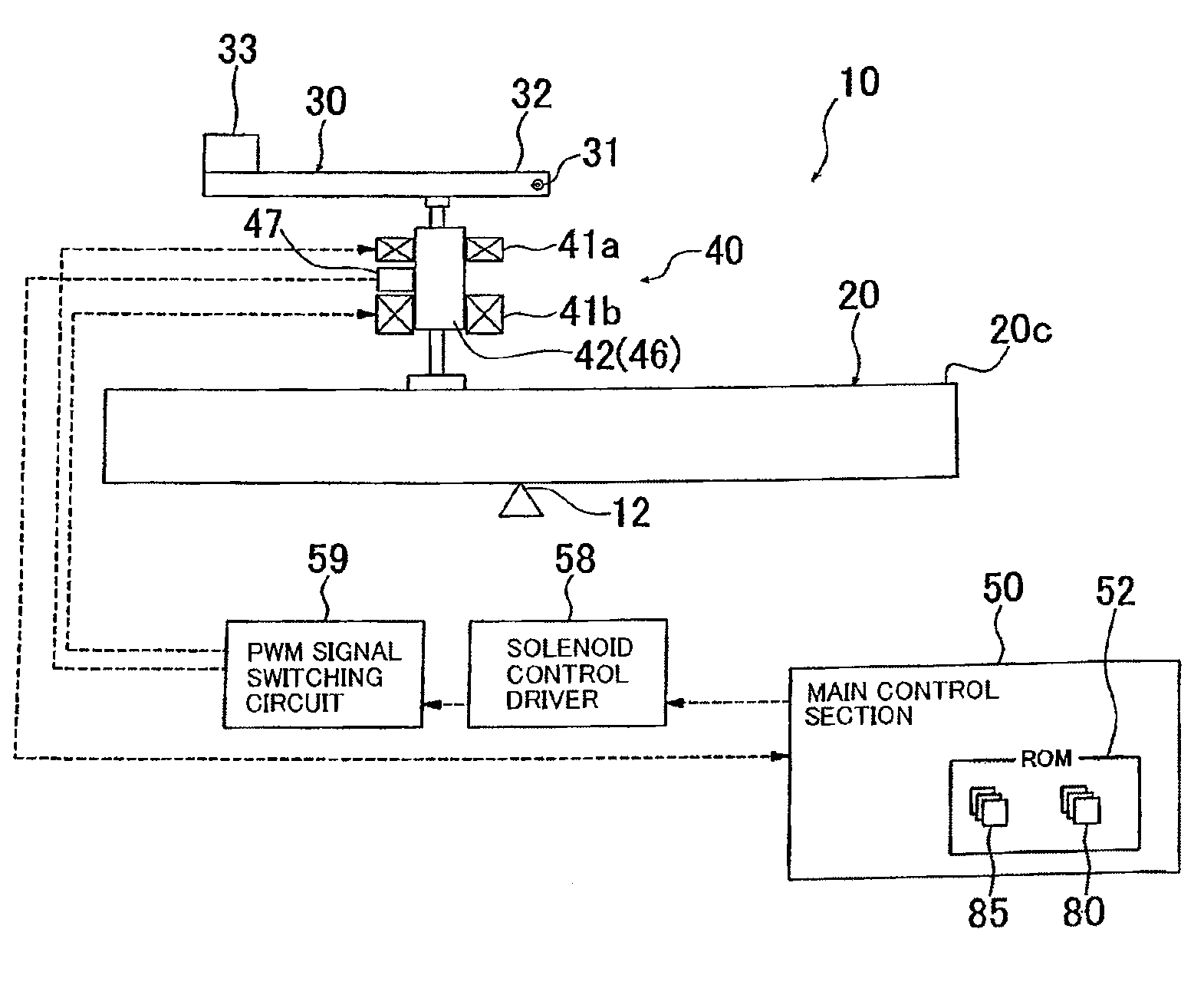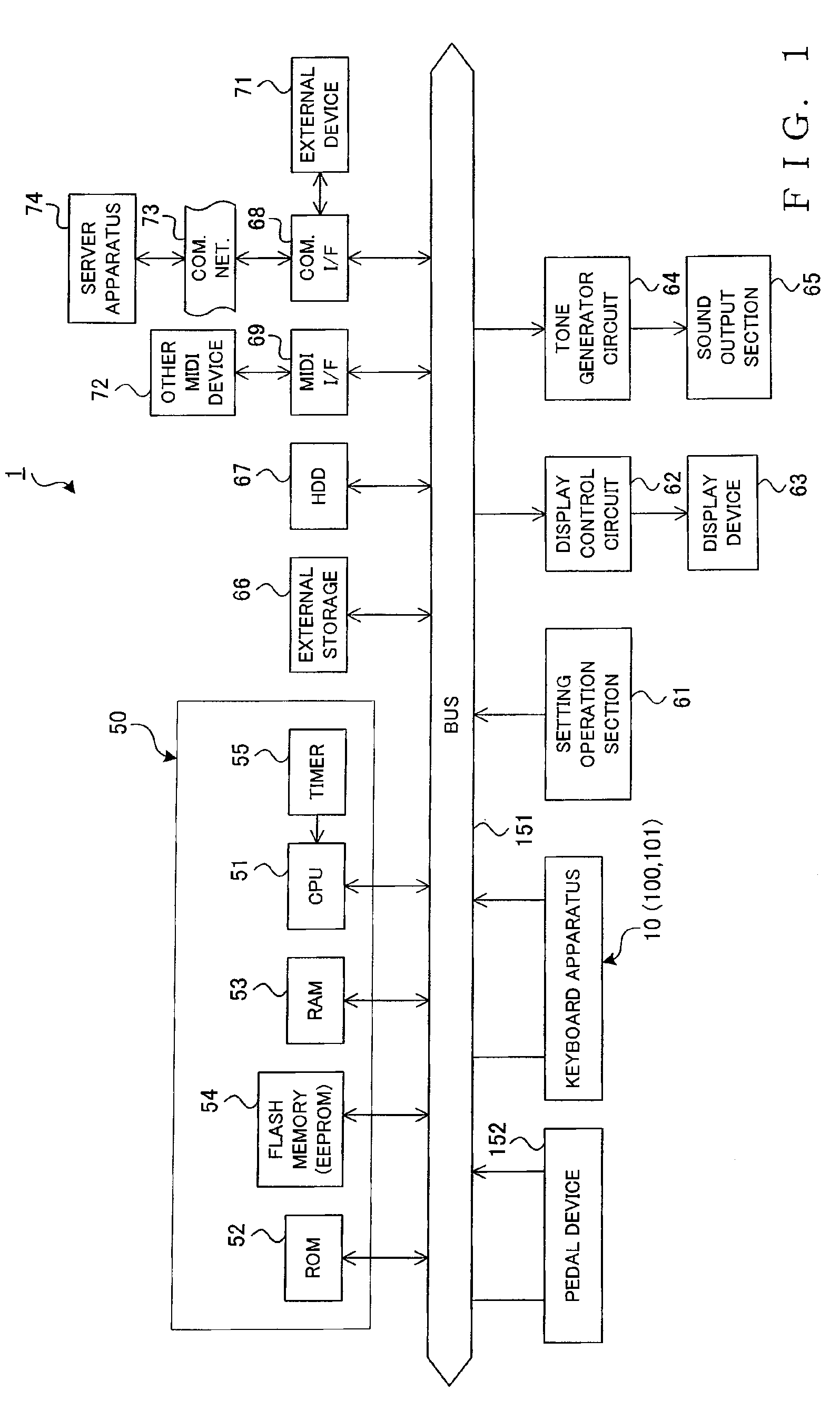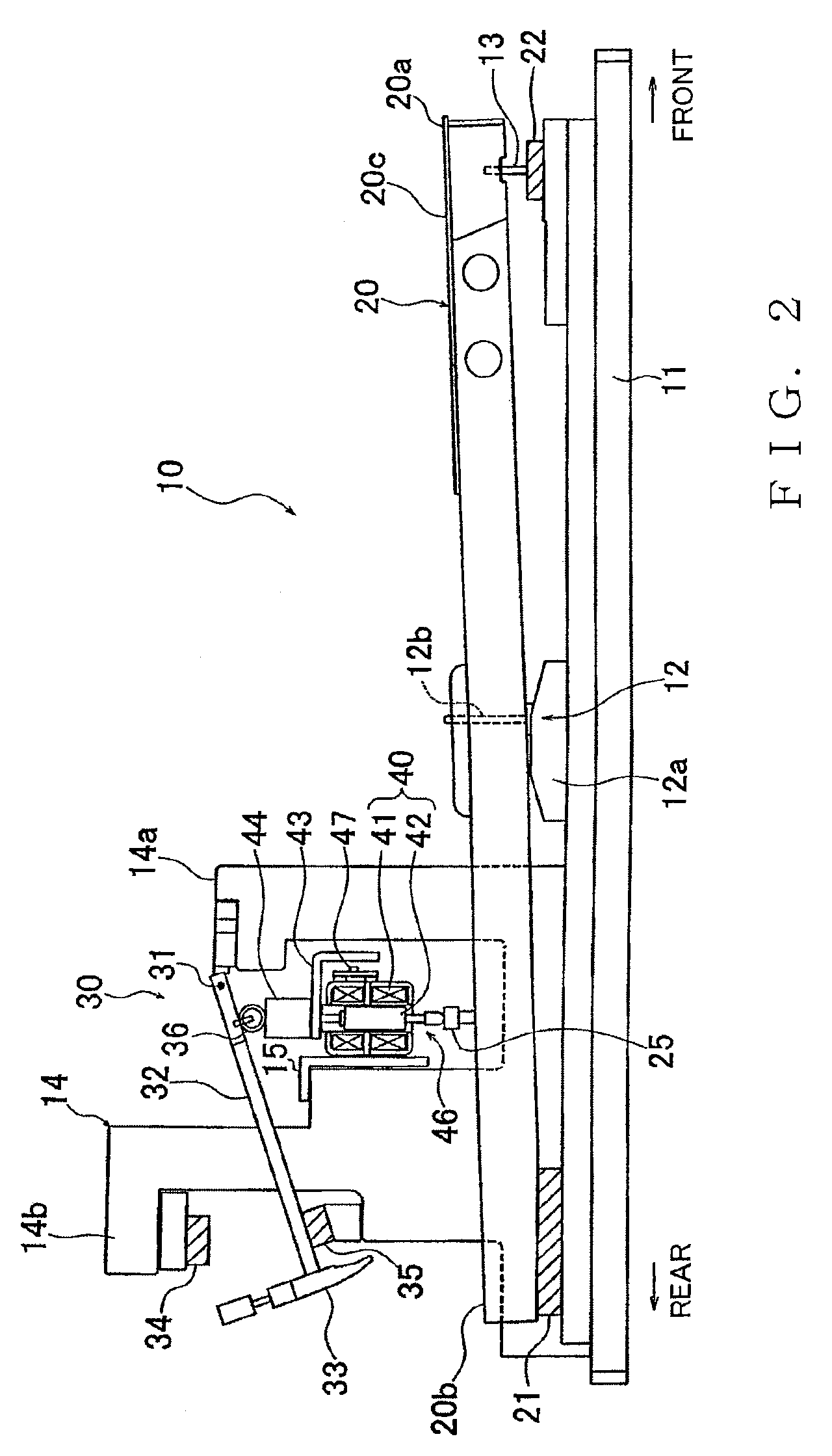Keyboard apparatus
a technology of keyboard and key, applied in the field of keyboard apparatus, can solve the problems of difficult to reproduce or reproduce the key touch feeling of an acoustic piano with high accuracy, complicated action mechanism, and inability to faithfully reproduce the units of electronic keyboard instruments, and achieve the effect of smooth driving force transmission and simple construction
- Summary
- Abstract
- Description
- Claims
- Application Information
AI Technical Summary
Benefits of technology
Problems solved by technology
Method used
Image
Examples
first embodiment
[0048][First Embodiment]
[0049]First, first to fourth embodiments will be described, with reference to FIGS. 2 to 10, as embodiments employing novel arrangements common to first and second aspects of the present invention.
[0050]FIG. 2 is a schematic side view of the first embodiment of the keyboard apparatus 10, which particularly shows one of the keys 20 and other component parts around the key 20. FIG. 3 is a fragmentary enlarged side view showing detailed constructions of a later-described electromagnetic actuator (driving force imparting section) 40 and other component parts around the actuator 40. Further, FIG. 4 is a view explanatory of behavior of the keyboard apparatus 10, of which FIG. 4A shows a state where the key 20 is in a non-depressed position while FIG. 4B shows a state in which the key 20 is in a depressed position. The keyboard apparatus 10 includes a frame 11 of a flat plate shape that forms part of the electronic keyboard instrument 1, the keys 20 and mass members...
second embodiment
[0095][Second Embodiment]
[0096]Next, a description will be given about a second embodiment of the keyboard apparatus of the present invention. Similar elements to those in the first embodiment are indicated by the same reference numerals as used for the first embodiment and will not be described here to avoid unnecessary duplication. Namely, elements not described in the following description are similar to those in the first embodiment; the same can be said for the third and succeeding embodiments.
[0097]FIG. 8 is a view showing a construction of the second embodiment of the keyboard apparatus 10-2, which includes a uni-directionally driven electromagnetic actuator 40-2 in place of the bi-directionally driven electromagnetic actuator 40 provided in the first embodiment of the keyboard apparatus 10. In other structural respects, the second embodiment of the keyboard apparatus 10-2 is similar to the first embodiment of the keyboard apparatus 10. More specifically, the uni-directionall...
third embodiment
[0100][Third Embodiment]
[0101]Next, a description will be given about a third embodiment of the keyboard apparatus of the present invention. FIG. 9 is a view showing a construction of the third embodiment of the keyboard apparatus 10-3. Whereas the electromagnetic actuator 40 in the first embodiment of the keyboard apparatus 10 is provided in such a manner that the respective axes of the projecting coil 41a, retracting coil 41b and plunger 42 are oriented in the vertical direction, the electromagnetic actuator 40-3 in the third embodiment of the keyboard apparatus 10-3 is provided in such a manner that the respective axes of the projecting coil 41a, retracting coil 41b and plunger 42 are slightly inclined with respect to the vertical direction. In other structural respects, the third embodiment of the keyboard apparatus 10-3 is similar to the first embodiment of the keyboard apparatus 10.
[0102]Specifically, the rear wall 14b of the support section 14 supporting the electromagnetic a...
PUM
 Login to View More
Login to View More Abstract
Description
Claims
Application Information
 Login to View More
Login to View More - R&D
- Intellectual Property
- Life Sciences
- Materials
- Tech Scout
- Unparalleled Data Quality
- Higher Quality Content
- 60% Fewer Hallucinations
Browse by: Latest US Patents, China's latest patents, Technical Efficacy Thesaurus, Application Domain, Technology Topic, Popular Technical Reports.
© 2025 PatSnap. All rights reserved.Legal|Privacy policy|Modern Slavery Act Transparency Statement|Sitemap|About US| Contact US: help@patsnap.com



